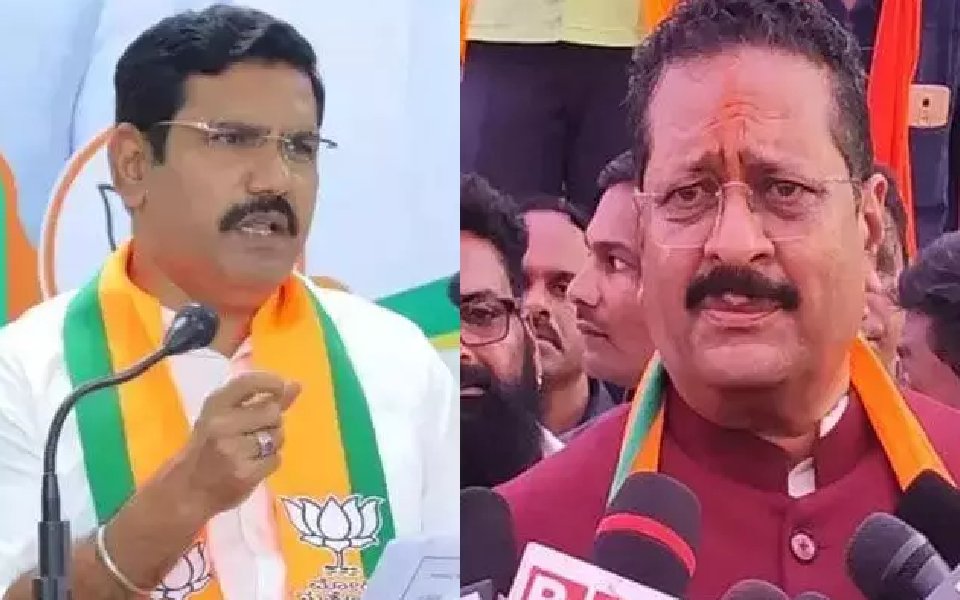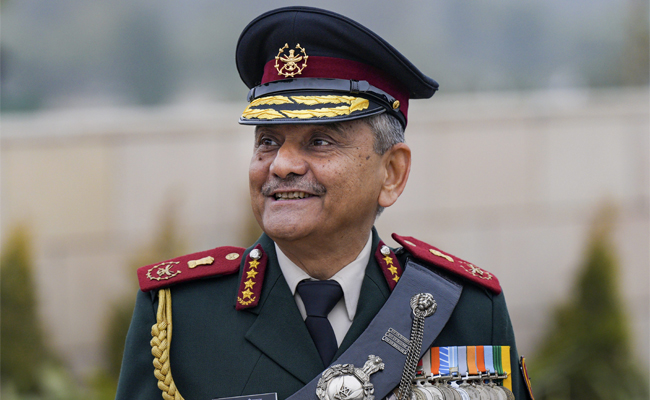Bengaluru, Aug 13: Karnataka BJP President B Y Vijayendra on Tuesday said he has no objections to plans by a section of party leaders to hold another 'padayatra' (foot march) against the Congress government in the state.
He said they can go ahead with their programme if the party's central leadership gives its nod.
A group of BJP leaders who are said to be disgruntled with Vijayendra and his father, veteran leader B S Yediyurappa, "controlling the state unit", has planned to hold a 'padayatra' to highlight the 'Maharshi Valmiki Scheduled Tribe Development Corporation' scam and the alleged diversion of funds meant for the welfare of the SC/STs to guarantee schemes, by the Congress government.
This plans comes close on the heels of a week-long protest march from Bengaluru to Mysuru, by the combined opposition of BJP and JD(S), demanding the resignation of the Chief Minister Siddaramaiah over the alleged Mysuru Urban Development Authority (MUDA) site allotment 'scam’, under Vijayendra's leadership, which concluded on August 10.
ALSO READ: I am a strong ticket aspirant for Channapatna bypolls, says BJP MLC CP Yogeeshwara
"As the state president of the party, taking everyone together is my prime responsibility, and I have been doing it from day one. Some people have expressed their intention for a 'padayatra'; if it will strengthen the party, and the central leadership gives their approval, I have no objections to it," Vijayendra said.
Speaking to reporters here, he said, "They have said that they will meet the central leadership. They are free to go ahead if the central leaders approve. Whatever is done should be in favour of the party and should benefit the organisation. If this good intention is there, that's enough." The foot march from Kudalasangama to Ballari is being planned under the leadership of BJP leaders and MLAs Basanagouda Patil Yatnal and Ramesh Jarkiholi, who have been vocal critics of Vijayendra and Yediyurappa.
Some of these "like minded" leaders of the party had held a meeting at a resort near the district headquarters town of Belagavi recently, under the leadership of Jarkiholi and Yatnal in this regard.
Former MPs Annasaheb Jolle, Pratap Simha and G M Siddeshwara and former ministers Aravind Limbavali and Kumar Bangarappa, among others, participated in the meeting.
There are also reports that discussions were held regarding lodging a complaint with party central leaders, against the father-son duo of Yediyurappa and Vijayendra.
Yatnal and Jarkiholi have been openly critical of Vijayendra, accusing him of indulging in "adjustment politics" with the ruling Congress, and trying to keep the party in his clutches along with his father Yediyurappa.
Let the Truth be known. If you read VB and like VB, please be a VB Supporter and Help us deliver the Truth to one and all.
Thane (PTI): Authorities have seized illegally stored 1,839 gas cylinders and seven vehicles worth over Rs 67 lakh in the Dombivli MIDC area of Thane district, officials said on Saturday.
A special vigilance team of the Mumbai Rationing Department detected an illegal storage of domestic and commercial LPG cylinders in Phase-2 of Dombivli (East).
Cylinders belonging to multiple gas agencies were found stockpiled in closed vehicles, unauthorised warehouses, and open sheds without mandatory permissions from the Explosives Department, Fire Department, or oil companies, according to an official release.





